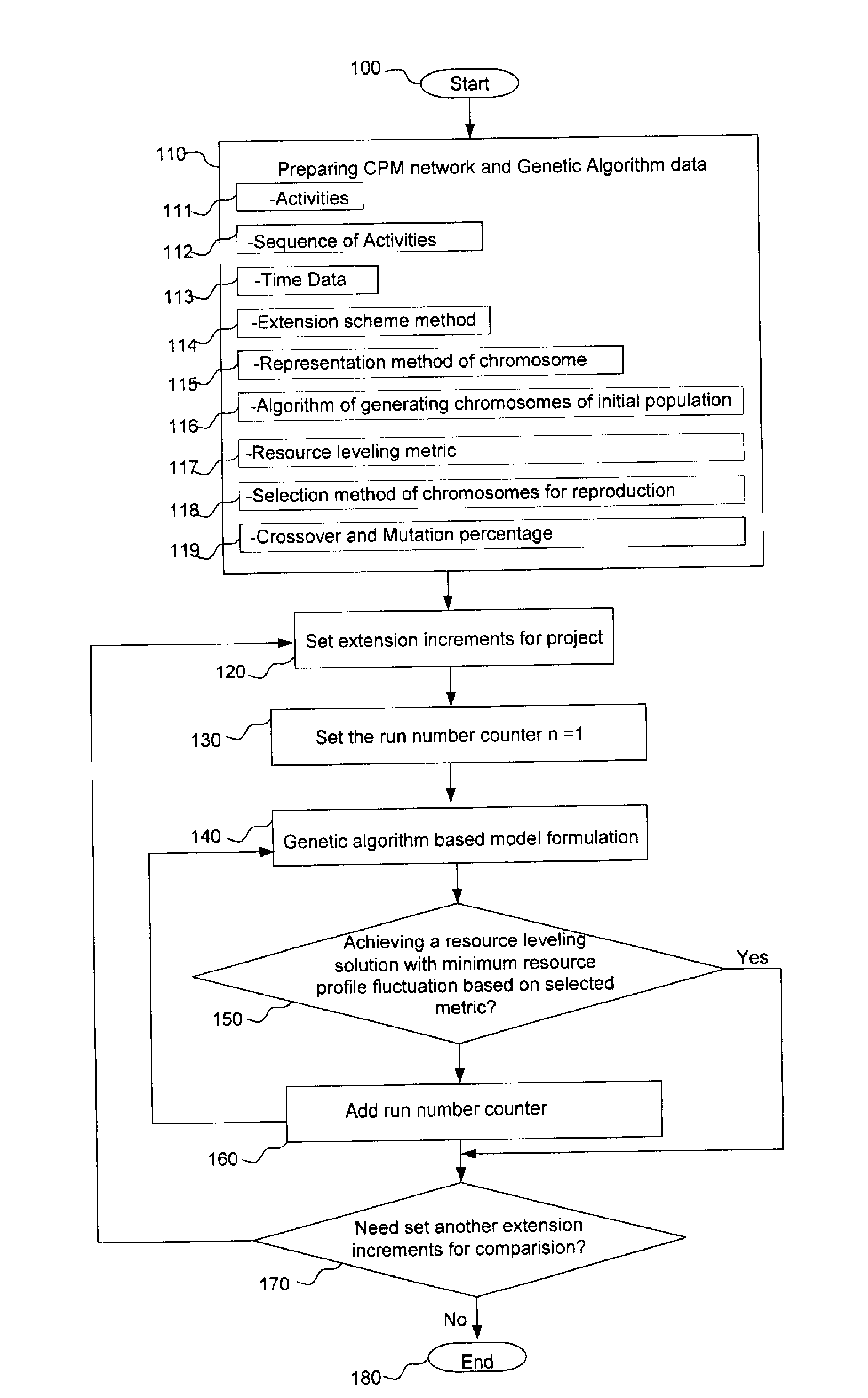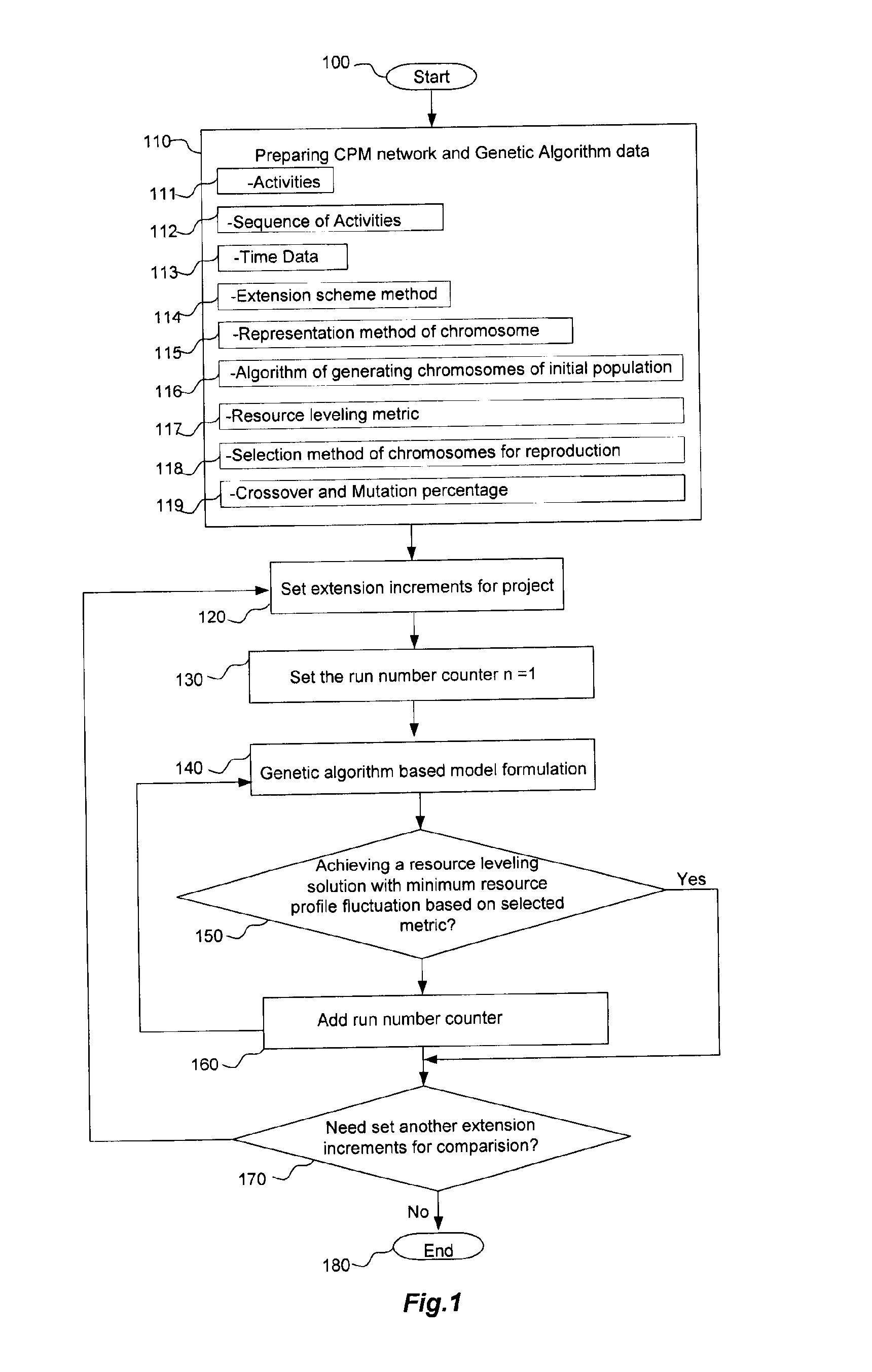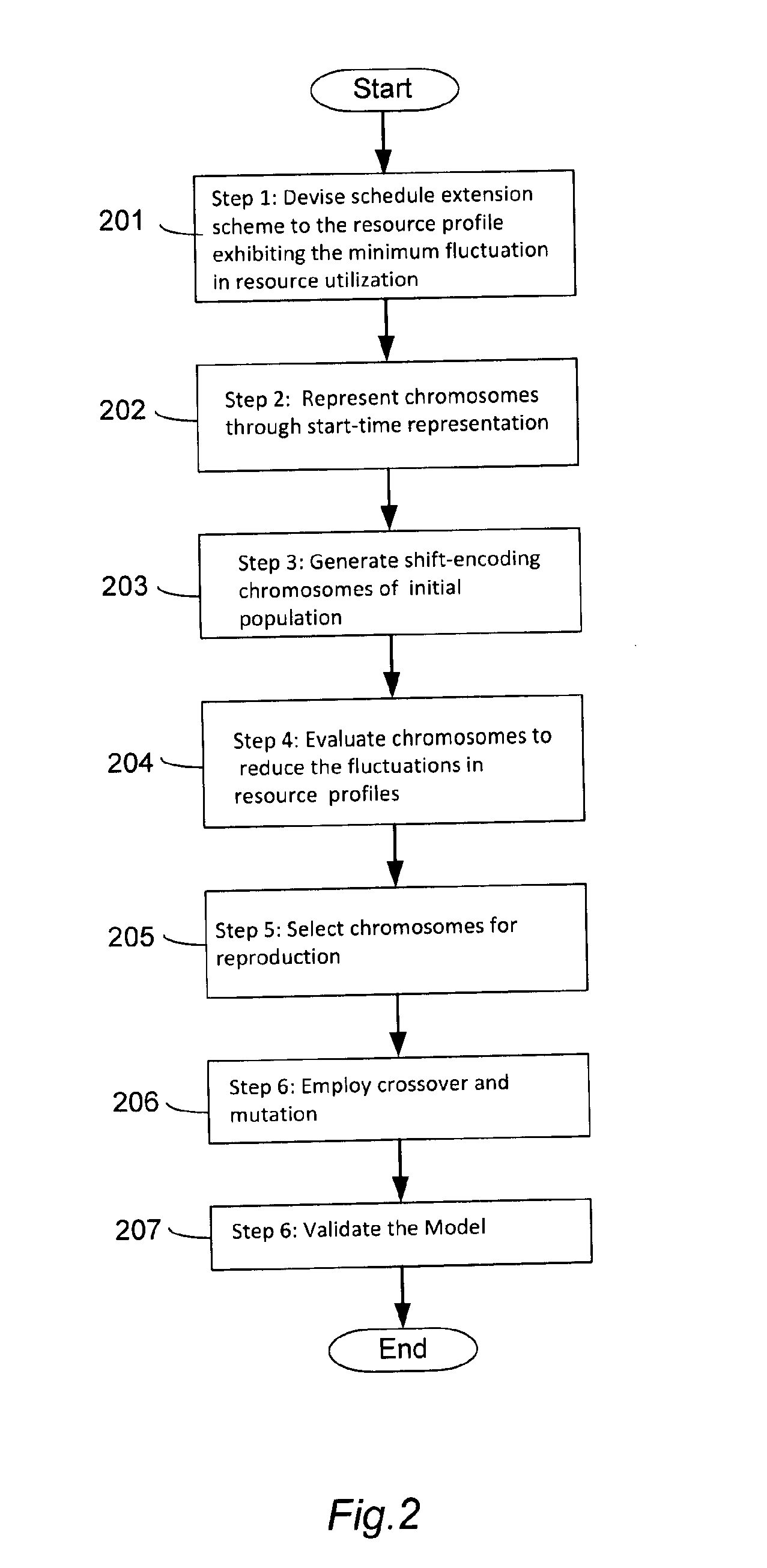Method of reducing resource fluctuations in resource leveling
a resource leveling and resource technology, applied in the field of resource leveling, can solve the problems of difficult or even impossible to define the fitness expression, the implementation of cross-over is more complex, and the difficulty of direct swapping, so as to reduce the fluctuation of resources
- Summary
- Abstract
- Description
- Claims
- Application Information
AI Technical Summary
Benefits of technology
Problems solved by technology
Method used
Image
Examples
Embodiment Construction
[0052]A network diagram of a project shows which activities follow and depend from other activities. Critical paths, i.e., routes through the network that will take the longest amount of time, are identified. Activity floats display project activities that can be delayed without affecting the critical paths. A basic network parameter of total float is computed from all of the floats identified in the network. The method allows for an extension scheme method to supplement the total float of the terminating activity of the network with a definite extension increment of a specified number of days, and represents a framework that allows devising schedules of completion times that range from the original duration to the original duration plus the extension increment in order to provide practitioners with schedules of low resource fluctuation and accordingly more efficient utilization of resources.
[0053]The extension scheme transforms the process of searching for the schedule of extended ...
PUM
 Login to View More
Login to View More Abstract
Description
Claims
Application Information
 Login to View More
Login to View More - R&D
- Intellectual Property
- Life Sciences
- Materials
- Tech Scout
- Unparalleled Data Quality
- Higher Quality Content
- 60% Fewer Hallucinations
Browse by: Latest US Patents, China's latest patents, Technical Efficacy Thesaurus, Application Domain, Technology Topic, Popular Technical Reports.
© 2025 PatSnap. All rights reserved.Legal|Privacy policy|Modern Slavery Act Transparency Statement|Sitemap|About US| Contact US: help@patsnap.com



